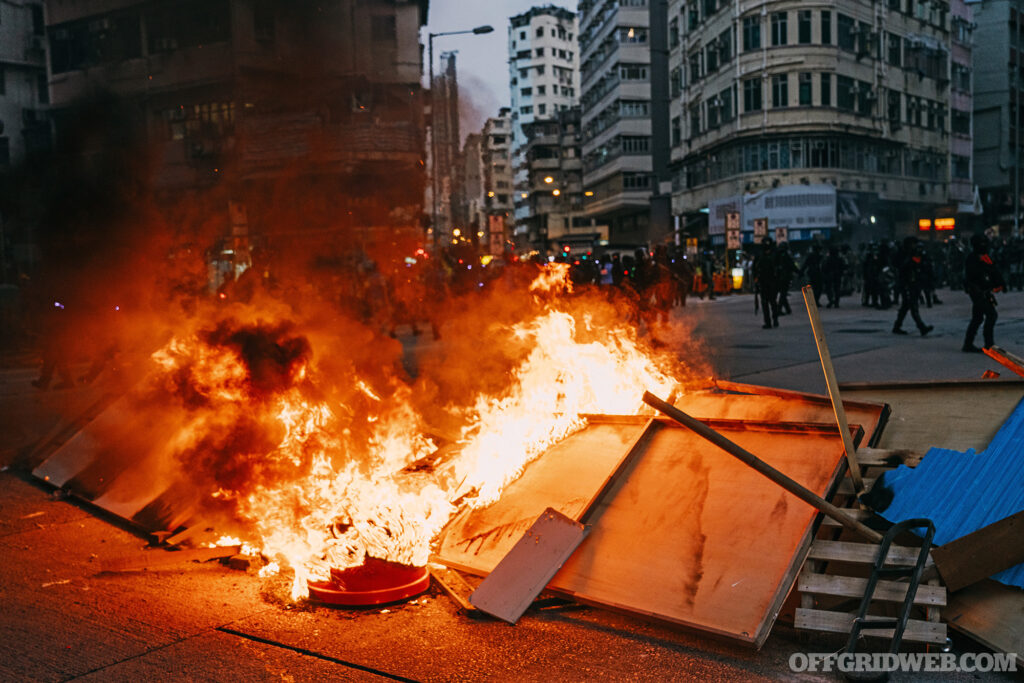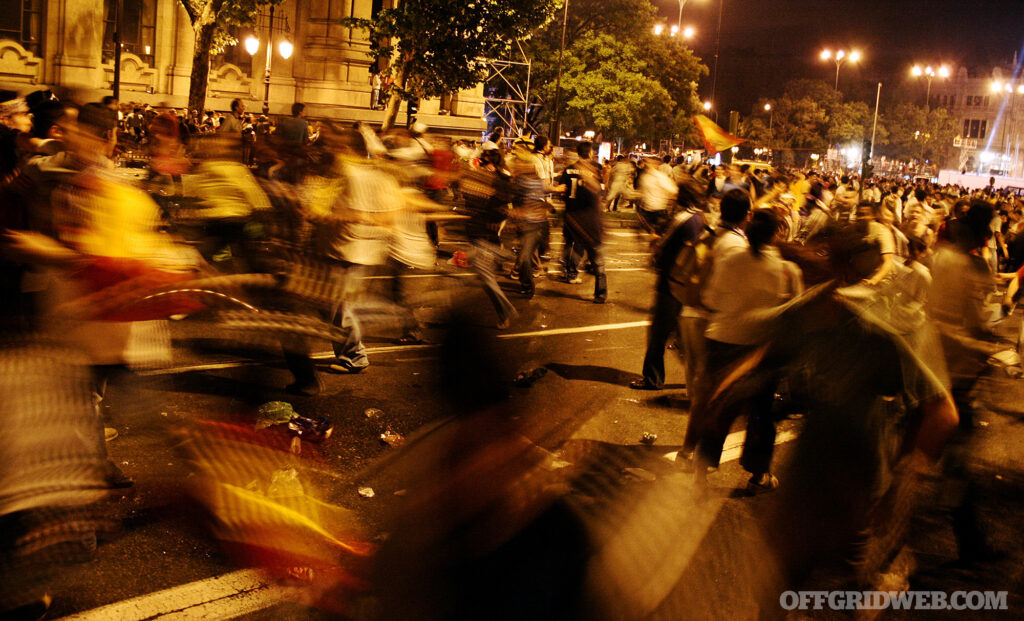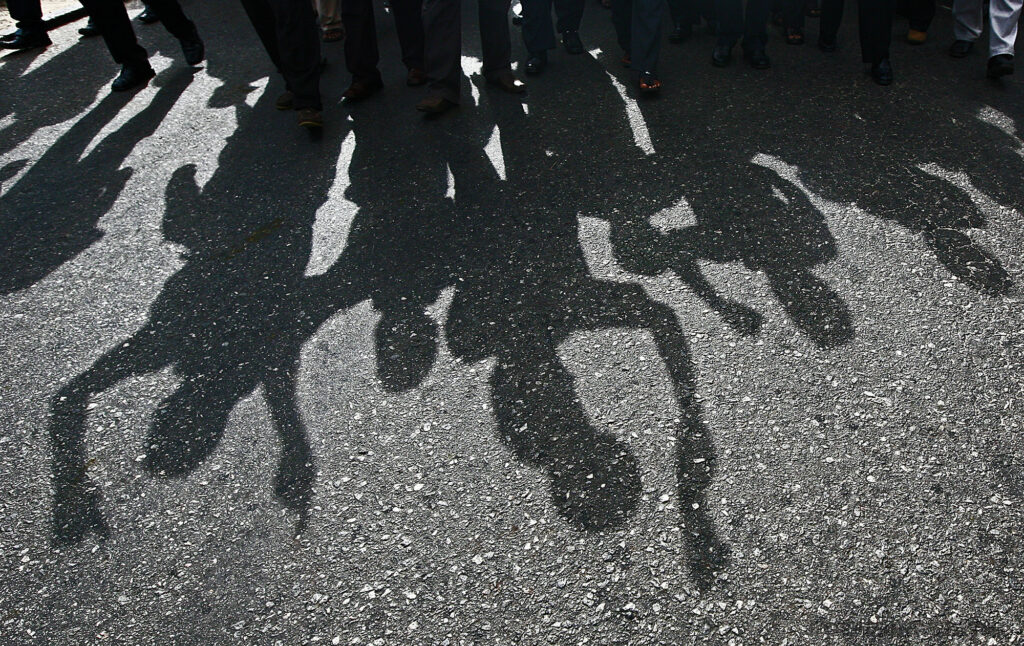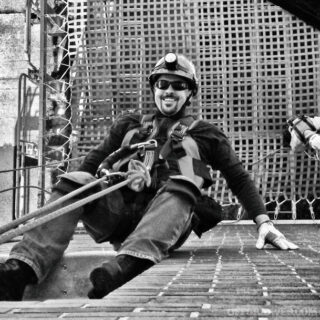For all of life’s biggest and heaviest decisions — changing careers, moving out of state, choosing a college to attend, proposing to a spouse, and so on — it’s wise to take a moment to consider your options. Some of us make lists of pros and cons, ask friends or mentors for insight, or “sleep on it” before committing to a choice. But no matter what, we avoid making split-second decisions about any situation that’s likely to change our lives for years or decades. There is, however, one instance where this level of deliberation will not be possible: deciding to pull the trigger in a self-defense situation.
When you’re thrust into one of these life-threatening situations, there’s usually no time to pause and ponder what to do. You’ll need to react immediately and decisively, knowing exactly how much is on the line. If you hesitate to use deadly force when you need to, you or your loved ones may be permanently disfigured or killed. But if you pull the trigger without adequate legal justification, you may be convicted of murder and spend the rest of your life behind bars.
In recent years, there have been many instances of riots, protests, or civil unrest which led to defensive shootings. Most of us know of the August 2020 events in Kenosha, Wisconsin, where Kyle Rittenhouse shot three men who pursued and assaulted him. Rittenhouse was charged with multiple counts of homicide and attempted homicide, and while he was eventually found not guilty on all counts, the aftermath and media circus undoubtedly changed his life forever.
On the other hand, take a look at the July 2020 case of 30-year-old U.S. Army Sergeant Daniel Perry, who was working as an Uber driver while BLM protests spread through the streets of Austin, Texas. When he attempted to drive through an intersection blocked by protesters, a 28-year-old U.S. Air Force veteran named Garrett Foster approached the driver’s side of his vehicle while open-carrying an AK-pattern rifle. Perry drew his firearm and shot Foster, killing him; he argued that this was an act of self-defense, but prosecutors claimed he “intentionally drove into the protestors.”
If you and your family found yourselves in the middle of a group of hostile rioters, how would you decide the best course of action? It’s easy to say you’d go directly to using deadly force, but would you be fully prepared to deal with an enraged crowd, speak to law enforcement officers and lawyers, and justify your actions in front of a jury? If an opportunity for non-violent escape or de-escalation appeared, how would you capitalize on it? How might you avoid getting cornered and confronted in the first place?
The Scenario
- Situation Type: Confronted by rioters.
- Your Crew: Yourself, your wife, and your newborn son.
- Location: Baltimore, Maryland
- Season: Spring
- Weather: Cloudy evening, high 65 degrees F, Low 47 degrees F
The Setup
It’s a happy occasion, but also a stressful one — your wife just gave birth to your firstborn son at Johns Hopkins Medical Center in Baltimore. In the third trimester of the pregnancy, some concerns arose, and after his birth, your son was placed into the neonatal intensive care unit for a few days. Thankfully, the situation improved, and you were cleared to take him home today. Around 6:30 p.m., you helped your wife and son into your Honda Civic in the hospital parking lot, feeling exhausted and thinking that you can’t wait to be back home. After leaving the hospital, you began the 15-minute drive back to your house in the suburb of Towson.
The Complication
A few minutes down the street from the hospital, you notice several groups of protesters massing on the sidewalk, heading the same direction you’re driving. Many of them are carrying signs and shouting. A few are holding objects that could be used as impact weapons — signposts, skateboards, metal water bottles, and so on. Before you can decide to change your route home, you pull up to the next intersection, where the protesters have rushed out into the street to form a human wall and block traffic.
Agitators with megaphones are screaming at drivers in nearby cars, clearly intent on preventing them from passing through. In the background, you can see two rioters lighting a fire inside a trash can and tipping it over into the street. Another teen lights a smoke bomb and flings it past your vehicle into the traffic jam that has formed behind you. Others are shining high-powered green and blue lasers at motorists to blind or disorient them.
Your heart rate rises, and you realize you need to find some way out of here immediately, but the only way out seems to be past the crowd ahead. As you contemplate this problem, a masked man leaps onto the hood of your car and begins stomping and kicking the windshield. Your wife sobs in fear as the glass cracks. Your immediate response is to hit the gas pedal, accelerating partway into the intersection and causing the rioter to roll off your hood. But now you’re faced with more than two dozen angry individuals closing in on your car from all sides.
Although the crowd is clearly furious, they haven’t used deadly force against you yet, and even if you decide it’s necessary to plow through them, you’re not sure your little Civic will be able to make it all the way through to safety. You can’t see the other side of the intersection, but there may be more obstacles and roadblocks preventing your escape, and you can’t back up due to the traffic behind you. You’re armed with your concealed-carry pistol — a Glock 19 with one spare magazine — but you understand that shooting out into the dense crowd from your vehicle is risky to say the least.
How will you and your loved ones get out of this situation safely? What options do you have for de-escalation or non-violent escape? If you conclude that lethal force is necessary, at what point would you use your vehicle to ram through the crowd? Under what circumstances, if any, would you use your pistol? What should your immediate actions be once you get to a safer location?
Retired NYPD Detective Joey Nickischer’s Approach
Saying this is a bad situation to be in would be a gross understatement. These kinds of situations can turn deadly very, very quickly. You’re already in legal trouble for having thrown somebody violently off your car and every decision you make from this point forward will impact how much you’re going to be prosecuted in our ever-increasing bad-guy-is-the-victim society.
There’s also a very real probability you and your family will be violently attacked if you do nothing. You’ll be fortunate to get out of this situation physically unscathed and will have to deal with the legalities later. But this is no time for bravado, this encounter will best be solved by making smart decisions to protect your precious cargo.
Preparation
The mission of bringing your baby and spouse home during times of civil unrest is about as high-risk and personal as it gets, and it should be treated as such. This is a VIP executive protection detail. Having done executive protection for foreign heads of state as a New York City Police Detective, I’m a little ahead of the curve on these types of events. Without spoiling all the tactics of executive movement, I’ll share some tips with you.
Start off with intelligence gathering before the VIP mission. What’s the weather supposed to be? Bring an extra umbrella or jacket if it’s going to be rainy. Bring a hat and sunglasses if it’s going to be sunny. And bring appropriate extra clothing for your teammates. Does this weather impact our travel? Some areas are prone to flooding during wet weather, and there could be areas negatively affected if there’s high wind. Snow and ice can also affect travel, particularly on secondary roads. Even light rain can affect travel time, visibility, and vehicle stopping distance.
What’s the current situation locally? Watching the local news on TV or reading local daily newspapers that cover your geographic area are vital sources of information. And one day worth of news isn’t enough, you need go back many days, preferably a week or more. You want to know what typically goes on locally on the day of the week you intend to travel, so you can compare that with the day you actually travel. Obviously, there’s civil unrest with the protest and that was likely covered in the news. But other local events can hinder your plans, including concerts, sporting events, parades, and the like.
What’s the most direct route? If this route has potential obstacles, identify them and go around them. When I say go around, we’re not talking about detouring by just a block or two — give them all a wide berth as events tend to spill over. Watch for those flood prone areas and avoid them. Watch for those major sporting events and the huge traffic snarls they can cause. Identify parade routes, their staging areas and spill out zones. Plan your best driving route, then come up with two or three alternates in case you run into something unexpected that closes the road, like a water main break or a bad car accident.
With this, calculate the travel time and allow an extra 30 minutes for trips under one hour. Don’t discount daily big city problems, like rush hour traffic that crawls along significantly under the speed limit, or roving pothole repair crews. And if time allows, drive the anticipated route beforehand, preferably at the same time of day and on the same day of the week.
Where are the safe havens? A safe haven is any place that you can go into that can protect you from a given threat. In this scenario, a police station, military facility, or hospital are the most likely safe havens, but a shopping mall, subway station, or government building could also suffice for other potential threats.
What’s your physical condition and mental state? If you’re sick, injured, exhausted, or otherwise distracted, find somebody else to drive and be cognizant that your condition can impact your thinking. While cold medicine, a cup of coffee, or energy drink can help in the short run, they do have negative effects, too. Recruiting a trusted (and properly briefed/trained) family member or friend to drive is a good idea in this scenario, considering all you’ve been through with the birth of your son and his medical complications. Be willing to admit when you’re too exhausted and mentally drained to drive.
Is your vehicle ready? If your vehicle’s mechanical condition is somewhat spotty, it’s not the best choice to utilize for a priority movement. Again, consider finding a trusted friend or family member to drive in their reliable car or rent one. The last thing you need is a mechanical breakdown or to run out of fuel at a crucial point. You should also consider what kind of vehicle you’re in. There are better sight lines out of a taller vehicle, like a full-size SUV, than there are out of a low sports car. An SUV is also typically a lot easier to get in and out of.
The added bonus of the full-size SUV is a strong engine, robust drivetrain, and higher ground clearance, all of which make for a more survivable bubble when things go bad. For really high-risk scenarios, some executive protection SUVs are equipped with run-flat tires, bullet-resistant armor, and various countermeasures. While that type of vehicle is overkill for 99.999 percent of the world, adding liquid tire sealant, skid plates, and security window film to the glass can give us a poor man’s “up-armored” vehicle.
On-Site
While driving, keep your head on a swivel. Think in three dimensions by looking forward, backward, left, right, up, and down. Pay attention not just to other vehicles, but to the pedestrians around you. Don’t box yourself in when stopping at lights and such. Endeavor to maintain an escape route by leaving sufficient space between you and the car in front of you.
If you’re on a multi-lane road without a raised median, stay in the left lane so you can drive over the double yellow lines if you need to escape. If the roadway has a shoulder, staying right can give you access to the breakdown area if you need space to get out of harm’s way. Try not to stop in a blind spot of a tall building where you can’t see down the street and sidewalk to the left and right of you.
Use camouflage. We’re not talking about painting your vehicle in the gray shades of urban camouflage or wearing a ghillie suit — we’re talking about blending into the surroundings. If your threat area is full of black painted upscale vehicles, drive a black upscale vehicle. If your threat area is full of anarchists, you might consider plastering your vehicle with a few stickers for bands, clothing companies, or local hangouts that are popular among that crowd — these aren’t openly political or divisive statements, but they’re a subtle signal that you might not be an enemy.

Above: The birth of a child is an emotional time, and the protective instincts of new parents are heightened. If you faced a violent attack under these circumstances, how would you react?
Your attire is another level of camouflage; blend in with what the people in your threat area are wearing so you don’t stand out. You can also use verbal camouflage by shouting your support or approval for whatever their cause is, buying yourself time to get out of harm’s way. You could even beep your horn in sync to their chant, if necessary.
Record the encounter. Dash cams and body cams are everywhere these days. Some of the higher-end vehicles can even record multiple angles around your vehicle. If you have a dash cam or body cam, make sure it’s recording. If not, position your cell phone as best you can and hit record. Your copilot should also be recording, focusing on the highlights.
In our scenario, the first glimpse of people carrying signs should have registered alarm bells. At the first sight of this, it’s time to stop or make a U-turn. Don’t throw yourself obliviously into danger.
But right now, we’re in trouble as we don’t want to become the next Reginald Denny, the truck driver who was severely beaten during the 1992 Los Angeles riots. But we’re also not yet in a position where our use of deadly physical force is warranted. While there are still many options you can try, none of them are guaranteed and all of them are less than ideal.
Crisis
Shooting your way out at this point is a guaranteed ride to prison, even if you do manage to escape the rioters. While you’re certainly in fear for your safety, the window stomping protestor only damaged your property, while you likely caused a physical injury to him. Will the sight of a firearm dissuade the protestors? Probably not. Look what happened to Kyle Rittenhouse, attacked by a mob of mostly unarmed rioters even while Rittenhouse wielded a rifle. What about firing some warning shots in the air like they do in the movies? Bad idea. For starters, you don’t know where those bullets will land.
Secondarily, you’re now the one escalating the encounter with the threat of deadly physical force. Others are suddenly more justified in their use of force against you and your family, as they can say they’re in fear for their lives. Plus, what if a cop is on scene monitoring the crowd and suddenly sees you and your gun as a threat to everybody around? That warning shot might make the rioters scatter briefly, but it also might enrage them further and now you have several fewer bullets should this become a true use of deadly force situation.
Trying to slowly drive through the crowd might be your choice. You have the safety bubble of your vehicle, at least until all the windows are smashed in. While the Civic is no SUV, it’s certainly strong enough to push people out of the way. In this scenario, consider the car sacrificial as they attack it. But be aware that professional protestors are known to block routes with hard barricades, like garbage cans and cinder blocks, as well as by laying themselves down in the street.
Waiting out the ire of the crowd from the safety of your vehicle might be an option, but one to approach very cautiously. If you’re lucky, they’ll just smash the windows, dent your fenders, pick up their windshield stomping friend and go on with their protest. If this is your choice, be sure your spouse is immediately calling 911, and let 911 know there’s a windshield stomping person who is injured, that you’re in fear for your life, and have a helpless newborn baby on board.

Above: If protests are expected in the area, plan your route carefully and be ready to redirect around congested streets. By the time a traffic jam forms, it may be too late to escape.
Mentioning that there’s a firearm on board could expedite the police response, plus the response is likely to be more numerous and heavily armed. Just be very careful with the words you use to explain this — “I’m a concealed carry permit holder, and I’m legally armed” will be taken very differently from “I’ve got a gun, and I’m ready to use it!” If this is a publicized protest and not a spontaneous one, the police are most likely very nearby for event monitoring, thus can quickly come to your aid.
If the irate crowd isn’t totally upon you yet and you can’t drive away, you could consider running away on foot. Crowds aren’t likely to chase you for more than a block or two as they get tired and dissuaded when their peers aren’t with them. There’s also a possibility the crowd will be more merciful at the sight of parents cradling a newborn, but putting your family at their mercy is a dangerous gamble. If you don’t feel you can outrun the protestors to a safe haven with your wife and newborn in tow, don’t.
Whichever method of escape you choose, make your next stop the police station. Give them your name, tell them where your vehicle is if you abandoned it, that you and your family were attacked by a rioting mob, and then shut up. Make sure your spouse also knows to shut up. If the police start asking questions, be polite, and tell them you need an attorney before answering any further questions. If you’re in a jurisdiction that’s sympathetic to “mostly peaceful” protesting, even if the cops are on your side, the district attorney might not be. It’s the district attorney who decides if, when, and how much to prosecute you.
Defense Attorney Jason Squires’ Approach
Preparation
There is a motto that applies to these situations that will serve you well: “When in doubt, GET OUT!” This motto suggests that good judgment — your brain — is the most effective weapon you will ever employ. By thinking ahead and working through scenarios in your mind, you can avoid a tremendous amount of trouble.
For the purposes of this unique situation, I’d say avoidance will serve a person well. For example: I need fuel in my vehicle. This need requires me to exit a freeway in a troubled part of town. What did I do wrong? I did NOT think ahead and stop for fuel in a safe part of town and avoid having to stop in the bad neighborhood. While fueling, my back can be turned while I work the nozzle and I can be approached by a bad actor. This has happened to me. I wear a suit for work and look like a guy with money. This makes me a target for panhandlers or troublemakers. This is a simple example of not thinking ahead. The point is subtle “mistakes” can cause irreparable injury.
On-Site
In this scenario, you weren’t able to plan ahead enough to avoid the situation. Now you’re traveling down a street and find yourself in the middle of a riot.
First, I’ll say it again: “When in doubt, get out!” At the very first sign of trouble, you must do everything you can to remove yourself from the equation. Use your most important tool, your brain, and your accelerator and speed your way to safety.
Let’s assume you’ve been surrounded and didn’t see this event coming your way. I’d immediately dial 911. Don’t anticipate much of a response from law enforcement. Law enforcement will likely be preoccupied if a riot of any magnitude occurs. The 911 call serves to preserve a record that you’re seeking help. This step is for a post-event analysis to document fear and concern for your personal safety. Further, don’t merely say “I’m surrounded by angry people.” But rather: “I’m surrounded by angry people, and they are going to hurt me.” This description might prioritize your event over other calls for assistance to the 911 call center.
Analyze the possible threats using a 5-foot, 15-foot, and then 50-foot scan radius. Meaning: What are the threats at 5 feet up to 50 feet away from you. Also, analyze the ingress and egress routes (turns, side streets, avenues to flee, etc.). Look for weapons of the rioters. Are these weapons an immediate threat to you inside the car, like a firearm, or are the weapons more likely to cause damage to property (pipe or brick, etc.). Sacrifice any vehicle damage to protect yourself and your loved ones. It doesn’t matter if you’re driving a Ferrari, sacrifice property to protect people.

Above: During protests, roadblocks can range from simple human walls to overturned cars and burning debris. Dense crowds may conceal these barriers.
Next, analyze the intensity of the rioters. I’m old enough to remember the L.A. riots and the helicopter footage of Reginald Denny being dragged from his tractor trailer and his head smashed with a brick. God bless Mr. Denny, but I wouldn’t have been traveling during such turmoil even if my job depended on it. I doubt Mr. Denny knew the riot/trouble had risen to such an intensity. So, for the sake of this example, you were caught unaware of trouble and find yourself in the middle of carnage.
Crisis
You’ve prepared as much as possible, taken every opportunity to avoid trouble, called 911, and scanned for threats and intensity. But despite it all, your windshield has been shattered and the angry crowd is closing in around you. Now what?
Remove yourself. Back your vehicle out of the area, pushing through the crowd without running anyone over. Remember, if a post-event analysis occurs, most injured persons will claim “mere presence.” This legal doctrine says I was merely there, and I personally wasn’t threatening anyone at the time when I was, for example, struck by the defendant’s car. So, avoid any and all injury to rioters. This seems counterintuitive, but threats are analyzed in a person-to-person lens, not as a collective. Each particular person/rioter must be offering a specific deadly threat to justify any significant use of force.
You may not merely claim the group was threatening you. Please let that sink in for future reference. Hurting someone with your vehicle will expose you to civil and likely criminal prosecution. You must show at every level that you exercised the minimum level of force to be legally “justified.”
Another key point: Do not interact or antagonize your rioters. Don’t verbally fight with the rioters. These persons are looking for an excuse to engage. The crowd provides anonymity and camouflages bad actors, as they merely blend in with the crowd. Don’t fight the crowd; you will lose. At every level, seek to remove yourself — at the first sign of trouble and every step thereafter.
The analysis changes with vulnerable persons in your care. Meaning: I enjoy greater legal latitude when protecting my kids and myself. The law recognizes a parent’s obligation to protect their children and law enforcement will almost always apply the “defense of others” analysis when a parent is defending his/her children.
Your vehicle is your shelter — use it. A brick or pipe doesn’t immediately threaten you inside a vehicle. But your car will not provide shelter indefinitely. A few hits with a pipe and your windshield will be compromised. So, the second weapons start striking the vehicle, you’re instantly in a “time is of the essence” situation. You’ll have seconds, maybe a minute, to remove yourself from the situation.
People often ask about the use of firearms. This is legally complicated. Each jurisdiction has restrictions and regulations related to firearms possession and ownership. Study the laws of your jurisdiction to remain legal. Also, learn the Justification Statutes in your jurisdiction. Having a professional relationship with a local defense attorney will serve you well, as you can seek advice and consultation with a qualified attorney.

Above: It’s often difficult to distinguish between angry protesters and physically violent rioters. The latter group knows this and uses it to their advantage, committing “hit and run” attacks before disappearing back into the crowd.
But I will say that nationwide, most jurisdictions allow you to protect yourself. The question quickly becomes, to what extent and what implements may I use to protect myself and remain legal. That’s extremely complicated. Here, there’s no clear answer, and it’s so heavily fact dependent. Clearly, using the minimum force necessary to protect yourself will provide the best legal protection possible under the circumstances. Period.
Ask yourself the question: How do I express fear? If I were on a 911 call that’s being recorded, am I going to sound frightened? Will I come off flat and emotionless? Men often try to hide fear and concern. Well, a 911 call isn’t the time to seem tough. A 911 call during a riot is a time to sell fear. Express yourself in an appropriate manner.
I say appropriate because you don’t want to sound like you’re going to die when the local teacher’s union blocks the road holding signs demanding higher pay. But if I were surrounded by an angry mob, I’d be expressing fear to 911 that I’m about to be seriously injured or die, and the frequency and pitch of my voice would reflect my fear. Many clients do themselves a disservice by failing to show emotion in a self-defense encounter.
Often, especially with men, the defender acts almost entitled to cause serious harm in a given situation. No! You can only use force to defend yourself from a similar or higher threat of death or injury. I shall exaggerate the point: I cannot discharge my firearm at a man holding a butter knife 35 feet away and say he had a weapon. The threat must be proportional and very serious to use any serious force.
Lastly, your vehicle is a weapon. Most people, even rioters, will move to avoid being hit by a car. I’d aggressively use the vehicle, without deliberately hurting anyone, to remove myself from the threat. Once removed, ask the 911 operator what they want you to do next (for example: stop at 91st Avenue and Thomas and wait for a patrol officer to take a report). This would suggest that you’ve remained on the 911 call during the entirety of the situation. I’d recommend staying on the phone and preserving the record of fear in the event someone was harmed by my attempts to protect myself.
Some might suggest not calling 911 to hopefully avoid prosecution in the event their vehicle strikes someone. Yes, you’re putting yourself at the scene, and by calling 911 you’re documenting that you are responsible for any harm. Some people would rather remain anonymous and hope law enforcement never finds them. Well, that approach is very difficult in today’s modern age. The amount of video evidence in today’s protests make it unlikely that law enforcement wouldn’t eventually find you. So, run to the law; don’t run from the law.
Disclaimer: The above-listed description is not legal advice. Seek direction from local, experienced attorneys in your jurisdiction. Laws vary from state to state and county to county. Always seek advice from competent and experienced attorneys who specialize in firearms laws.
Conclusion
As is often the case with emergency preparedness, an ounce of prevention is worth a pound of cure. Planning ahead might allow you to avoid areas where protests often occur and recruit someone who isn’t sleep-deprived to take on the responsibility of driving your family home. Do everything in your power to avoid being in the wrong place at the wrong time. You might think, I shouldn’t have to change my plans to avoid protesters blocking the roads. I should be able to drive directly to my destination without worrying about being impeded or attacked.
That’s true — in an ideal utopia, you shouldn’t have to be concerned about your own safety on the roads, but here in the real world you sometimes do. Avoidance is the only surefire way to steer clear (no pun intended) of all criminal and civil liability, both of which have become increasingly serious concerns in cities that aren’t friendly towards armed citizens.

Above: The First Amendment clearly acknowledges “the right of the people peaceably to assemble, and to petition the Government for a redress of grievances.” However, violent and disruptive protests have become a cause for concern in many metropolitan areas.
Remember Daniel Perry, the man involved in the Austin, Texas, shooting we mentioned in the introduction? He was convicted of murder and sentenced to 25 years in prison. During the trial, evidence was presented that showed Perry searching for locations of protests — not an unreasonable thing to do if he wished to avoid them.
However, it also showed him sending friends messages such as “I might go to Dallas to shoot looters,” “I will only shoot the ones in front and push the pedal to the metal,” and “I wonder if they will let my [sic] cut the ears off of people who’s [sic] decided to commit suicide by me.” (He also apparently searched for “good chats to meet young girls.”) Unsurprisingly, this made it extremely easy for prosecutors to show criminal intent and achieve a conviction.
Even if you’re not a scumbag who’s deliberately seeking out a violent confrontation, remember that all your actions leading up to an incident will be closely examined in the courts. Defending yourself may be a split-second decision, but everything leading up to that moment doesn’t have to be. If you have a proven history of being polite, upstanding, and taking proactive steps to stay out of trouble, dealing with the legal fallout of a self-defense incident will be significantly easier.
Meet Our Panel

Jason Squires
Jason Squires is an attorney with over 25 years of defense experience protecting the rights of citizens accused of gun crimes. Squires also represents, advises, and protects members of law enforcement following “deadly force encounters.” He’s an avid firearms enthusiast and when not working, he competes in 3-gun competitions nationwide.

Joey Nickischer
Joey Nickischer is a retired detective with the New York City Police Department. He currently works as a technical rescue instructor with numerous organizations, covering topics including high angle rope, mine rescue, off-road operations, and wilderness search. He serves as a team leader with the Westchester County Technical Rescue Team and is the commander of the Putnam County Technical Rescue Team, as well as serving as ex-chief of the Patterson Fire Department.
Read More
Subscribe to Recoil Offgrid's free newsletter for more content like this.
Editor's Note: This article has been modified from its original version for the web.
The post What If: You’re Surrounded by Aggressive Rioters? appeared first on RECOIL OFFGRID.
By: Patrick Diedrich
Title: What If: You’re Surrounded by Aggressive Rioters?
Sourced From: www.offgridweb.com/preparation/what-if-youre-surrounded-by-aggressive-rioters/
Published Date: Wed, 10 Apr 2024 12:19:33 +0000
------------------------
Did you miss our previous article...
https://bushcrafttips.com/bushcraft-news/so-is-moss-a-fungus-what-is-it
 What is BushcraftSurvival SkillsToolsVideosBushcraft CampsBushcraft KitsBushcraft ProjectsPrivacy PolicyTerms And Conditions
What is BushcraftSurvival SkillsToolsVideosBushcraft CampsBushcraft KitsBushcraft ProjectsPrivacy PolicyTerms And Conditions
